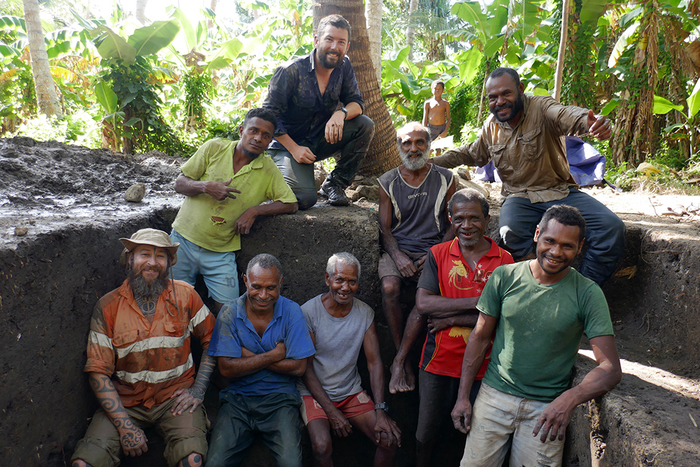
The discovery of pottery from the ancient Lapita culture by researchers at The Australian National University (ANU) has shed new light on how Papua New Guinea served as a launching pad for the colonization of the Pacific–one of the greatest migrations in human history and answers the question: why were the Pacific islands colonized?
The study “Frontier Lapita interaction with resident Papuan populations set the stage for initial peopling of the Pacific,” makes clear the initial expansion of the Lapita people throughout Papua New Guinea was far greater than previously thought.
The study, published in the Nature Ecology and Evolution journal, is based on the discovery of a distinctive Lapita pottery sherd on Brooker Island in 2017 that lead researcher Dr. Ben Shaw said was “like finding a needle in a haystack”.
“Lapita cultural groups were the first people to reach the remote Pacific islands such as Vanuatu around 3,000 years ago. But in Papua New Guinea where people have lived for at least 50,000 years, the timing and extent of Lapita dispersals are poorly understood,” Dr. Shaw said. “For a long time, it was thought Lapita groups avoided most of Papua New Guinea because people were already living there.”
The study shows Lapita people introduced pottery to Papua New Guinea that had distinct markings, as well as new tool technologies and animals such as pigs.
“We found lots of Lapita pottery, a range of stone tools, and evidence for shaping of obsidian [volcanic glass] into sharp blades,” said Dr. Shaw. “As we dug deeper, we reached an even earlier cultural layer before the introduction of pottery. What amazed us was the amount of mammal bone we recovered, some of which could be positively identified as pig and dog. These animals were introduced to New Guinea by Lapita and were associated with the use of turtle shell to make tools.”
Dr. Shaw said the new discovery explains why the Lapita people colonized the Pacific islands 3,000 years ago and the role that Indigenous populations in New Guinea had in Lapita decisions to look for new islands to live on.
According to Dr. Shaw, later Lapita dispersals through PNG and interaction with Indigenous populations profoundly influenced the region as a global center of cultural and linguistic diversity.
“It is one of the greatest migrations in human history and finally we have evidence to help explain why the migration might have occurred and why it took place when it did,” he said. “We had no indication this would be a site of significance, and a lot of the time we were flying blind with the areas we surveyed and when looking for archaeological sites.”
The research involved many ANU researchers and international collaborators who showed how migration pathways and island-hopping strategies culminated in rapid and purposeful Pacific-wide settlement.
“A lot of our good fortune was because of the cultural knowledge, and we built a strong relationship with the locals based on honesty and transparency about our research on their traditional lands. Without their express permission, this kind of work would simply not be possible. The Brooker community is listed as the senior author on the paper to acknowledge their fundamental role in this research,” Dr. Shaw said.
The study was authored by Shaw, Stuart Hawkins, Lorena Becerra-Valdivia, Chris S. M. Turney, Simon Coxe, Vincent Kewibu, Jemina Haro, Kenneth Miamba, Mathieu Leclerc, Matthew Spriggs, Karen Privat, Simon Haberle, Felicitas Hopf, Emily Hull, Alana Pengilley, Samantha Brown, Christopher E. Marjo, Geraldine Jacobsen, and Brooker and Panaeati Island communities, Papua New Guinea.




